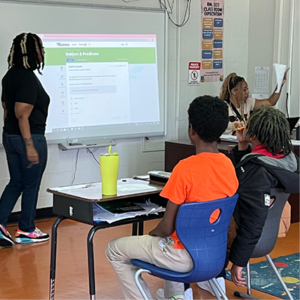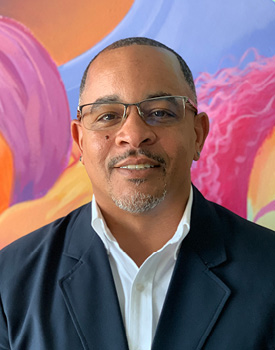Mental Well-Being Starts Young

(This is an updated post from one originally published on April 14, 2022)
Young people in the U.S. are facing real mental health challenges today, and the problem has been getting worse—even before the pandemic, virtual school, and recent world conflicts.
U.S. Surgeon General Vivek Murthy describes mental health as “the defining public health crisis of our time.” He points to youth in particular. In December 2021, he issued a warning that mental health illnesses are leading to “devastating effects” among young people. In fact, the suicide rate for Americans 10 to 19 increased by 40 percent from 2001 to 2019, and emergency room visits for self-harm rose by 88 percent.
THESE NUMBERS TELL A STARK STORY
In 2021, the Centers for Disease Control and Prevention (CDC) published a study on adolescent well-being and the effects of poor mental health. Broad takeaways include an increase in the number of adolescents reporting poor mental health, the fact that building strong bonds and connections to youth can protect mental health, and that schools and parents should create protective relationships with students and help them grow into healthy adulthood.
The CDC study recently produced some troubling findings about high school kids:
-
- In 2021, more than 4 in 10 students felt persistently sad or hopeless, and nearly one-third experienced poor mental health.
- In 2021, more than 1 in 5 students seriously considered attempting suicide, and 1 in 10 attempted suicide.
- Anxiety disorders afflict a third of all teens today.
- LGBQ+ students, female students, and students across racial and ethnic groups were disproportionately affected.
- Nearly half of LGBQ+ students in 2021 seriously considered suicide—far more than heterosexual students.
- Black students were more likely to attempt suicide than students of other races and ethnicities.
Recent events like the pandemic contribute to social isolation, anxiety, and depression in kids of all ages. In fall 2021, the American Academy of Pediatrics, the American Academy of Child and Adolescent Psychiatry, and the Children’s Hospital Association joined to declare a National State of Emergency regarding children’s mental health.
The Surgeon General’s Advisory on Protecting Youth Mental Health outlines a series of recommendations that rely heavily on empowering youth and families, ensuring access to mental health care, supporting education, community and childcare settings, and expanding the early childhood and education workforce.
ON THE FRONT LINES WITH KIDS
“We are completely in support of the Surgeon General’s goals, as they align with our priorities, as well,” said The Children’s Guild President and CEO Jenny Livelli.
It’s critical to have services available to meet kids where they are, whether a clinic- or school-based program. The Children’s Guild operates seven schools in Maryland and the District of Columbia that all provide free mental health services to students. An Outpatient Mental Health Clinic serves more than 80 additional public schools across Maryland. Clinicians specialize in working with children and families and are trained in trauma-informed treatment.
“By being right in the school for kids, we are reducing barriers to access,” says Jillian Szczepaniak-Gillece, Children’s Guild Director of Behavioral Health Services. “We want to help each young person and their family learn skills to address interpersonal, social, emotional, and academic challenges. We work with caregivers, families, school staff, and other involved agencies to provide individualized treatment that is strength-based, trauma-informed, and evidence-based.”
MEETING THE NEEDS OF CHILDREN, FAMILIES, AND COMMUNITIES
One key to improving mental health is making support accessible. So, The Children’s Guild services include psychiatric services, counseling, and school-based behavioral health. More than 1,400 children are positively impacted by their programs and services today.
Mental health conditions can be shaped by many factors. Genes and brain chemistry play a role. So does environment, such as life experiences and neighborhood conditions. Relationships with family and friends are important. There are also many social forces. Young people see messages daily through social media and popular culture that erode their feelings of self-worth. To face these challenges and others, The Children’s Guild offers a continuum of care founded in our approach to educating the whole child.

A PIONEERING FORCE IN EDUCATION
Our educational approach engages every student; fosters achievement, growth, and independence to the greatest extent possible; and gives experiences that meet the needs of every learner and help them thrive.
Our approach includes eight pillars to help us create a flexible, brain-compatible organizational culture that emphasizes the values, skills, and beliefs necessary for a successful life:
- There is an infusion of specific values, such as agile thinking and flexibility, throughout all aspects of our programs’ people, systems, environments, and curriculums.
- We comprehensively address our students’ emotional, social, cognitive, and behavioral needs. Our students are equipped with the skills needed to excel in their journey of personal growth through mindfulness exercises, positive relationships with adults, the development of self-regulation strategies, and so many other tools and resources to help them thrive.
- Our physical environments are intentionally used to shape the feeling, thinking, and behavior of all that are immersed in them. Our spaces are intentionally used to stimulate the intellect, excite the senses, and touch the emotions.
- Our students, staff, and parents are taught about how the brain learns so they become lifelong learners.
- We help our students develop effective self-regulation of their behavior through individualized, meaningful learning experiences before, during, and after behavioral incidents.
- Students are provided with the opportunity to experience the performing arts, visual arts, and music in their program and communities.
- Through community projects and advocacy, our students and staff positively impact the community in which they live.
- Our students and staff develop the skills to realistically approach problems, recognize their own contributions, take responsibility, and implement solutions.
ORGANIZATIONS LIKE THE CHILDREN’S GUILD ARE MORE IMPORTANT THAN EVER
As we participate in National Mental Health Awareness Month this May, it’s obvious the national focus on mental health is increasingly critical. “We need to build the foundation for healthier, more fulfilled, and more resilient youth, and The Children’s Guild is making that happen in the greater metro area around the nation’s capital,” said Livelli.
“We touch families and lives in meaningful, often highly impactful ways. That commitment has become even more critical in our complex world.”
The Children’s Guild also seeks partnerships and growth opportunities of all kinds. Should you want to learn more or see the work they do in area schools, please contact them anytime at 410.444.3800.
A Few Important Resources:
Promoting Mental Health and Well-Being in Schools: An Action Guide for School Administrators and Leaders (US Centers for Disease Control & Prevention)
Mental Health for Adolescents (US Department of Health & Human Services)
Children’s Mental Health (US Centers for Disease Control & Prevention)
 The Children’s Guild operates three non-public schools (The Children’s Guild School of Baltimore, The Children’s Guild School of Prince George’s County, and The Children’s Guild – Transformation Academy), serving students with behavioral and academic challenges that are usually caused by diagnosed disabilities such as emotional disability, autism spectrum disorder (ASD), developmental disabilities, and more. We know firsthand the shortages and difficulty in finding special education teachers, speech-language pathologists, school social workers and clinicians, and therapeutic behavioral aides and classroom aides.
The Children’s Guild operates three non-public schools (The Children’s Guild School of Baltimore, The Children’s Guild School of Prince George’s County, and The Children’s Guild – Transformation Academy), serving students with behavioral and academic challenges that are usually caused by diagnosed disabilities such as emotional disability, autism spectrum disorder (ASD), developmental disabilities, and more. We know firsthand the shortages and difficulty in finding special education teachers, speech-language pathologists, school social workers and clinicians, and therapeutic behavioral aides and classroom aides. reducing requirements for entry is actually counterproductive. Underprepared special education teachers are less effective and even more likely to leave the field.
reducing requirements for entry is actually counterproductive. Underprepared special education teachers are less effective and even more likely to leave the field. Special ed teachers are in high demand today – in every school district across the U.S.
Special ed teachers are in high demand today – in every school district across the U.S. 













